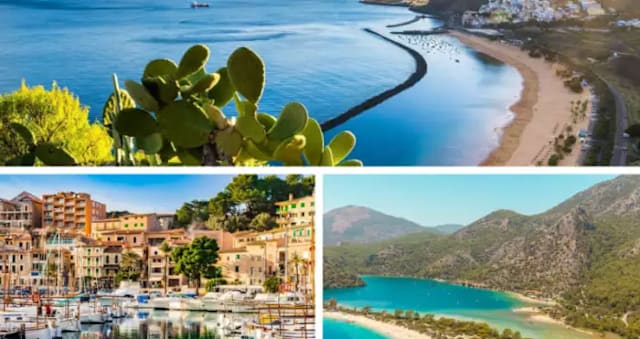
Once a neglected Victorian relic, Stephen McClarence revels in the the St Pancras Renaissance Hotel.
It’s early morning and I’m in the hotel bathroom. I’ve just slapped on a dollop of shaving foam when there’s an excited shout from my wife Clare in the bedroom: “Eurostar arriving from Paris!” I rush through and join her at the window to watch the train snake sleekly along the platform below us and come to a gradual halt.
We’re staying at the St Pancras Renaissance Hotel, an almost inseparable part of the London station, and our room overlooks the platforms. The high-arched windows give us a pigeon’s eye view of Eurostar arrivals and departures, of train doors opening and passengers surging out and hurrying to the exits.
What a sense the view gives of the potential glamour of travel: boarding a train in the heart of one great capital and disembarking in the heart of another.
Most of the passengers, however, seem too preoccupied to take in the splendour of the station they’re striding through, which is celebrating its 150th anniversary this autumn. With exhibitions and a range of special events, there’s a lot going on, but without Sir John Betjeman, the Victorian Society and fellow campaigners, there probably wouldn’t be much to celebrate.
By the 1960s, the station, a high-point of Victorian Gothic Revival, was threatened with demolition, justifying Betjeman’s fear that it was “too beautiful and too romantic to survive”.

The Sir John Betjeman Suite.
To judge what would have been lost, climb the baronial hotel’s Grand Staircase – none grander, glowing red and gold, unfurling like a silk scarf under a vaulted ceiling, its turquoise sky studded with golden stars. High up are murals of the Seven Virtues – upped to eight for symmetry’s sake. In a reassuringly Victorian way, the new Virtue is Industry.
It’s very apt, as industrialists and businessmen down from the North and Midlands, were the target guests of the hotel, which bristles with towers, turrets and spires like a Camelot of commerce.
Over the years, however, this last and biggest of the great railway hotels became prohibitively expensive to heat and finicky guests made it clear that just half a dozen bathrooms for 300 bedrooms didn’t quite fit the bill. They had bathrooms back in their mansions in Huddersfield and Halifax, for goodness sake, so they jolly well expected them in London.
The hotel, originally called the Midland Grand, gradually became something between a dinosaur and a white elephant. It closed in the 1930s and was converted into offices, which closed in 1985. Then it went into sad decline and became a favourite Gothic film location.
The station – now renamed St Pancras International – carried on, though, and it, rather than next-door King’s Cross, has always been our London terminus. So it’s haunted by personal memories.
As we wander round the corridors, with their hand-stencilled peacocks, we get lost in nostalgia. We remember our frantic dashes from the taxi rank (now the hotel lobby) through the booking office (now a busy bar and restaurant) for the last train home to Sheffield.
Out on the platforms, once drab and draughty and sometimes swirling with Sherlock Holmes fogs, I point out the site of the telephone booths from which, as a young reporter, I telephoned my account of the 1982 Royal Wedding.
Over the course of the weekend, we rarely stray from the station, which has become a “destin-station”, a tourist landmark in its own right. One-in-six of the 50 million people who visit it every year come just to look round, eat and drink, browse the classy shops,and listen to the (variously gifted) pianists on the public piano.
It’s a superb place to stroll round and people-watch, particularly without the urgency of a train to catch. We coincide with a stag party of extremely merry men heading for the Champagne Bar dressed as toreadors, Foreign Legionnaires and Frenchmen with strings of plastic onions round their necks.
Many visitors are photographing themselves with Martin Jennings’ endearing statue of Betjeman, peering up at the roof and looking like a crumpled teddy bear in a trilby. How different is the station’s other statue – the controversially huge embracing couple. An American friend we have lunch with takes one look at it and shakes her head. “The woman’s skirt is too tight,” she says crisply.
We first stayed at the hotel when it reopened seven years ago after its sumptuous refurbishment. On a whim, we decided to keep that trip local and venture no more than 15 minutes’ walk from our room.
So we walked a few hundred yards to the vibrant British Library, where we saw the manuscript of Jane Eyre, Beethoven’s tuning fork and Scott’s journal from his ill-fated Antarctic expedition with Captain Oates’ poignant farewell: “I am just going outside and may be some time.”
We discovered St Pancras Old Church, last resting place of the pioneering feminist Mary Wollstonecraft and Bach’s youngest son, Johann Christian, himself a composer. We took in Bloomsbury and the backwater charm of such unexpected green spaces as Regent’s Canal and Camley Street Natural Park. Oh, and the British Museum.
Back in the bathroom on this latest visit, I slap on another dollop of shaving foam, pick up a razor… and there’s a shout of “Eurostar leaving for Brussels!” I rush back to the window. It’s a very slow shave.
GETTING THERE
St Pancras Renaissance hotel (0207 841 3540 / www.stpancraslondon.com) has doubles from £250 room only.
East Midlands Trains (www.eastmidlandstrains.co.uk) runs regular services to St Pancras International from stations in the North and Midlands..